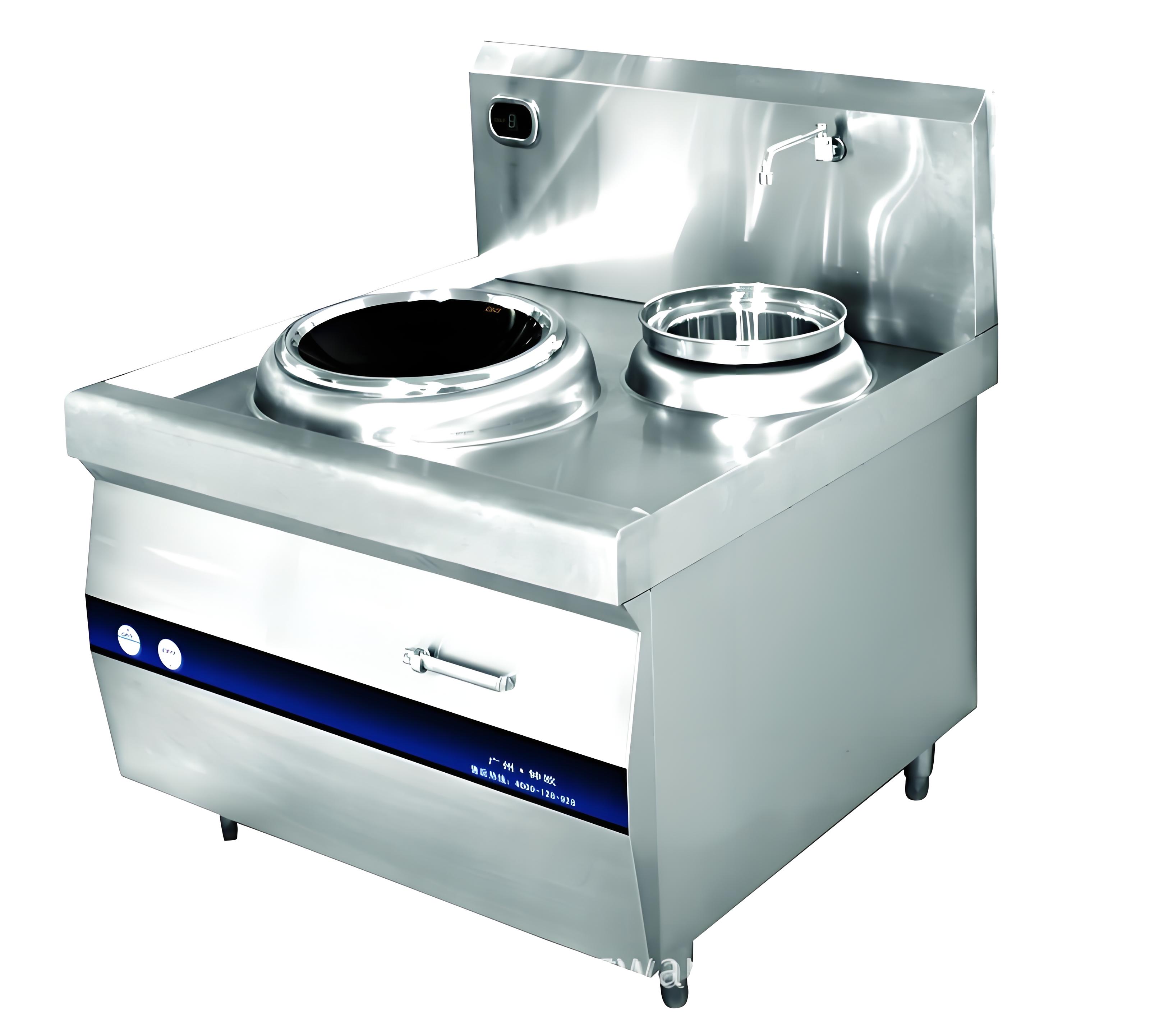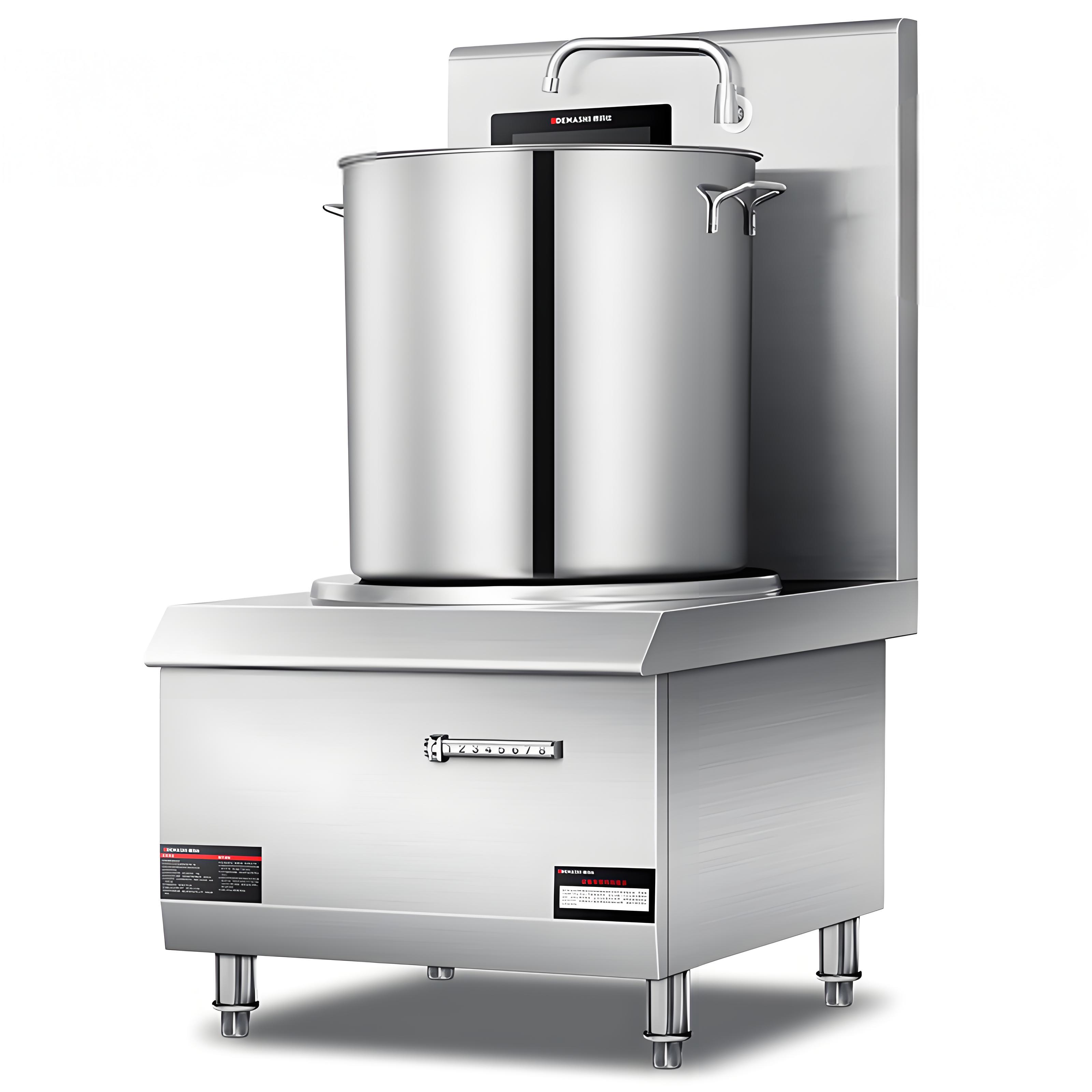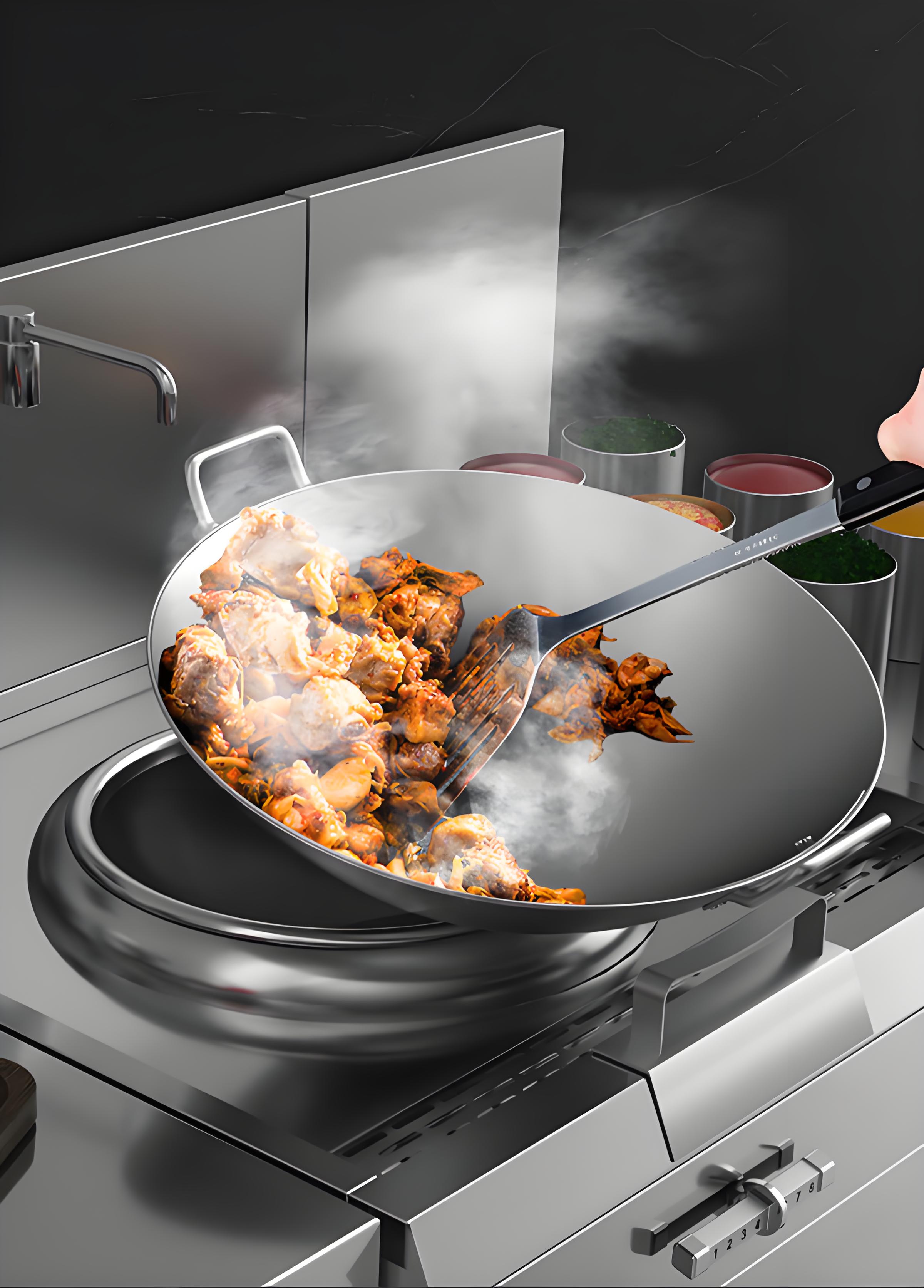As someone who’s spent years navigating the fast-paced world of commercial kitchens and studying the ins and outs of restaurant operations, I’ve seen firsthand how equipment choices can make or break a chain’s efficiency and bottom line. When it comes to induction cooking, the question of whether it’s a good fit for chain restaurant brands comes up often. It’s a valid concern—chain restaurants operate on tight margins, strict consistency, and high-volume demands. So, let’s dive into whether induction cooking can hold its own in this high-stakes environment, exploring its benefits, challenges, and practical applications for chains looking to scale smartly.

What Makes Induction Cooking Different?
Induction cooktops work by using electromagnetic fields to directly heat pots and pans, unlike traditional gas or electric stoves that heat the surface first. This technology has been around for decades but has gained traction in commercial kitchens for its precision and efficiency. In my years advising restaurant owners, I’ve noticed that induction cooking often sparks curiosity because it promises energy savings and safety—two big wins for any chain. But does it deliver in the chaotic, high-output world of chain restaurants?
To answer this, let’s break it down. Chain restaurants, whether fast-casual or full-service, prioritize consistency across locations, cost control, and speed. The equipment they choose needs to align with these goals while handling the wear and tear of daily operations. Induction cooking sounds promising, but it’s not a one-size-fits-all solution. Let’s explore the pros, cons, and real-world considerations.
The Advantages of Induction Cooking for Chain Restaurants
1. Energy Efficiency That Cuts Costs
One of the first things I noticed when working with restaurants adopting induction was the impact on their utility bills. Induction cooktops are highly energy-efficient, converting up to 90% of energy into heat, compared to 70% for electric and just 40% for gas. For a chain with dozens or hundreds of locations, those savings add up fast. Imagine a burger chain with 50 locations—shaving even $500 a month off each store’s energy bill could mean $300,000 in annual savings.
Beyond the numbers, induction cooktops heat up instantly and cool down just as fast, reducing energy waste during downtime. In my experience, this is a game-changer for chains with fluctuating service hours, like fast-casual spots that see heavy lunch rushes but quieter evenings.
2. Precision for Consistent Results
Consistency is the backbone of any successful chain. Customers expect the same burger or pasta dish whether they’re dining in New York or Los Angeles. Induction cooktops shine here because they offer precise temperature control. Unlike gas burners, which can have hot spots or inconsistent flames, induction allows chefs to set exact temperatures, ensuring every dish is cooked the same way, every time.
I once worked with a mid-sized chain that switched to induction for their signature sauces. The ability to maintain a steady simmer without constant adjustments meant their recipes tasted identical across all locations. For chains obsessed with brand consistency, this level of control is a major selling point.

3. Safety in High-Pressure Kitchens
Commercial kitchens are hectic, and accidents happen. Induction cooktops reduce risks because the cooking surface stays cool unless a compatible pan is present. This minimizes burns and fire hazards—a huge plus for chains training new staff across multiple locations. I’ve seen kitchens where staff turnover is high, and induction’s safety features gave managers peace of mind, knowing that even less-experienced cooks were less likely to cause accidents.
4. Cleaner and Cooler Kitchens
Induction cooktops produce less ambient heat than gas or traditional electric ranges, which means cooler kitchens. This is a big deal for chain restaurants, especially in urban locations where ventilation systems are already stretched thin. A cooler kitchen also means happier staff and lower HVAC costs. I recall visiting a chain’s flagship location after they installed induction units—the cooks were thrilled not to be sweating through their shifts, and the dining area felt fresher, too.
5. Sustainability and Brand Image
Today’s diners care about sustainability, and chains are under pressure to show they’re environmentally responsible. Induction cooking aligns with this trend, as its energy efficiency reduces a restaurant’s carbon footprint. For chains looking to market themselves as eco-conscious, like farm-to-table or health-focused brands, induction can be a subtle but powerful part of their story. I’ve advised brands that leveraged this in their marketing, highlighting their “green kitchens” to attract environmentally conscious customers.
The Challenges of Induction Cooking for Chains
While the benefits are compelling, induction cooking isn’t without its hurdles. Chain restaurants face unique challenges, and I’ve seen some stumble when adopting this technology without proper planning. Here’s what to watch out for.
1. High Upfront Costs
The initial investment in induction-compatible equipment can be steep. Induction cooktops and ranges are often pricier than their gas or electric counterparts, and you’ll also need to invest in compatible cookware (typically magnetic stainless steel or cast iron). For a single location, this might be manageable, but for a chain rolling out new equipment across 20 or 200 stores, the costs can feel daunting.
I worked with a regional chain that hesitated to switch because retrofitting their kitchens would’ve cost upwards of $10,000 per location. They eventually phased in induction units gradually, starting with high-volume stores, which helped spread out the expense.

2. Cookware Compatibility Issues
Not all pots and pans work with induction. This can be a headache for chains with existing inventories of aluminum or copper cookware, which aren’t magnetic and won’t heat up on an induction surface. Replacing cookware across multiple locations is not only costly but also logistically complex. I’ve seen chains mitigate this by standardizing their cookware purchases early on, ensuring all new equipment is induction-ready.
3. Power Supply Limitations
Induction cooktops require significant electrical power, which can strain older buildings or locations with limited electrical capacity. In my experience, urban chains often face this issue, as retrofitting electrical systems can be expensive and disruptive. Before adopting induction, chains need to audit their locations’ power infrastructure to avoid costly upgrades or operational downtime.
4. Staff Training and Adaptation
While induction is user-friendly once you get the hang of it, there’s a learning curve. Cooks used to gas flames or electric coils may need time to adjust to induction’s instant heat and precise controls. For chains with high staff turnover, this means investing in training programs to ensure consistency. I’ve seen chains succeed by creating detailed training manuals and hosting hands-on workshops to get staff comfortable with the technology.
5. Limited High-Heat Applications
Induction excels at precise, low-to-medium heat cooking, but it can struggle with the intense heat needed for techniques like wok cooking or charring. For chains specializing in Asian cuisine or grilled dishes, this can be a dealbreaker. I once consulted for a stir-fry chain that tested induction but ultimately stuck with gas for their high-heat woks, though they used induction for sauces and soups.

Comparing Induction to Traditional Cooking Methods
To give you a clearer picture, here’s a comparison of induction cooking versus gas and traditional electric in the context of chain restaurants:
Feature | Induction | Gas | Electric |
|---|---|---|---|
Energy Efficiency | High (up to 90%) | Low (around 40%) | Moderate (around 70%) |
Temperature Control | Precise, instant adjustments | Variable, less precise | Moderate, slower to adjust |
Safety | Cool surface, low fire risk | Open flame, higher risk | Hot surface, moderate risk |
Upfront Cost | High | Moderate | Low to moderate |
This table reflects what I’ve seen in real-world applications. Induction stands out for efficiency and safety, but the upfront cost and cookware compatibility can be sticking points for chains on a budget.
When Does Induction Make Sense for Chain Restaurants?
Based on my experience, induction cooking is best suited for chains that meet certain criteria:
Menu Focus: Induction works best for menus requiring precise, low-to-medium heat cooking, like sauces, soups, or sautéed dishes. Fast-casual chains with standardized recipes (think Panera or Chipotle) benefit most.
Location Type: Urban locations with high energy costs or strict ventilation regulations are prime candidates. Rural or older locations may face power supply challenges.
Brand Values: Chains emphasizing sustainability or modern technology can use induction to reinforce their image.
Scale and Budget: Chains with the capital to invest in new equipment and cookware can adopt induction more easily than smaller or budget-constrained brands.
I’ve seen chains like a national soup-and-salad brand thrive with induction because their menu relied heavily on simmering and reheating, which induction handles beautifully. On the other hand, a pizza chain with high-heat ovens found induction less practical for their core offerings, though they used it for side dishes.

Practical Steps for Implementing Induction in a Chain
If you’re considering induction for your chain, here’s how to make the transition smooth, based on my years of helping restaurants navigate equipment upgrades:
Audit Your Menu: Analyze which dishes could benefit from induction’s precision and which require high-heat methods that might be better suited to gas.
Assess Infrastructure: Work with an electrician to ensure each location’s power supply can handle induction units. Budget for any necessary upgrades.
Pilot Test: Start with one or two locations to test induction’s impact on operations, staff training, and customer satisfaction before rolling it out chain-wide.
Invest in Cookware: Purchase induction-compatible pots and pans in bulk to negotiate better pricing. Standardize across locations to simplify inventory.
Train Staff Thoroughly: Develop training materials that highlight induction’s benefits and quirks, like the need for magnetic cookware and how to use precise temperature settings.
Market the Change: If sustainability is part of your brand, promote your switch to induction as a commitment to eco-friendly practices.
I’ve seen chains that followed this approach—like a 30-location café chain—successfully integrate induction within a year, reducing energy costs by 15% and improving kitchen safety.
Real-World Examples of Induction in Chains
To ground this in reality, let’s look at a couple of examples from my experience:
Fast-Casual Salad Chain: A 40-location chain I worked with adopted induction for their soup stations. The precise temperature control ensured consistent flavors, and the energy savings helped offset the initial investment within two years. Staff appreciated the cooler kitchens, especially during summer rushes.
Upscale Burger Chain: This chain tested induction for burger griddles but found it couldn’t match the high heat of gas for searing. They compromised by using induction for sauces and sides, which streamlined their prep line and reduced energy costs.
These examples show that induction can work, but it’s not a universal fix. Chains need to align the technology with their specific needs.

The Verdict: Is Induction Right for Your Chain?
After years of working with restaurants, I believe induction cooking can be a fantastic fit for chain restaurant brands, but it’s not a slam dunk for everyone. If your chain prioritizes energy efficiency, safety, and consistency, and you have the budget to invest in equipment and training, induction could transform your kitchens. However, if your menu relies on high-heat cooking or your locations have electrical limitations, you might need to stick with gas or electric for now.
The key is to weigh the pros and cons against your chain’s unique needs. In my experience, chains that take a strategic approach—piloting induction in a few locations, training staff thoroughly, and aligning it with their menu—see the best results. Induction isn’t just a trend; it’s a tool that, when used right, can give your chain a competitive edge.
Related Questions and Answers
Q: Can induction cooktops handle the high volume of a busy chain restaurant?
A: Yes, induction cooktops are designed for commercial use and can handle high-volume cooking, especially for dishes requiring precise heat. However, for high-heat techniques like wok cooking, gas may still be better.
Q: How long does it take to train staff on induction cooking?
A: In my experience, training takes about 1-2 weeks for staff to feel confident, depending on their prior experience. Hands-on practice and clear manuals speed up the process.
Q: Are there any chain restaurants known for using induction?
A: While not always publicized, many fast-casual chains, especially those with soup or sauce-heavy menus, use induction for its efficiency and consistency. Some European chains have also adopted it to meet strict energy regulations.
Q: What’s the biggest downside of induction for chains?
A: The upfront cost of equipment and compatible cookware is the biggest hurdle, especially for chains with many locations. Electrical upgrades can also add to the expense.




